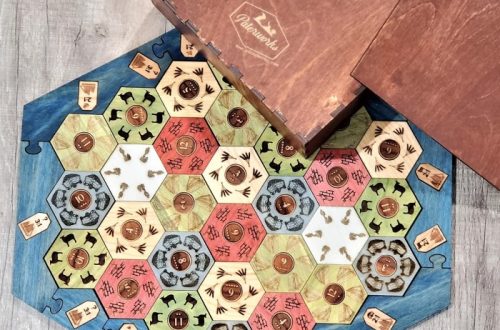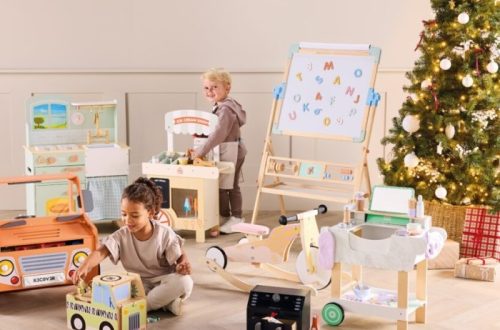Introduction to Speedcubing
Speedcubing combines puzzling fun with intense competition. It’s where competitors solve Rubik’s cubes as fast as possible. This sport has grown from a hobby to a global phenomenon.
The Evolution of Rubik’s Cube Competitions
Rubik’s cube competitions have come a long way. They started as small gatherings and are now massive global events. Early contests in the 1980s have evolved into today’s well-organized championships. These events often feature a mix of traditional and innovative challenges. Competitors face off in various categories, like solving cubes one-handed or while blindfolded. Over the years, these contests have pushed cubers to achieve faster and faster solve times. The rise of online resources has helped speedcubers improve their techniques. Many participants now memorize hundreds of algorithms. These sequences guide them to quick solutions no matter the cube’s configuration.
Max Park: A Profile in Speed
Max Park transcends typical boundaries in the world of speedcubing. Faced with the challenges of autism, Max has utilized the Rubik’s cube not just as a puzzle, but as a pivotal part of his development and interaction with the world.
Early Challenges and Triumphs
From early childhood, Max Park faced significant motor skill challenges due to his autism. Simple tasks like unscrewing a water bottle cap were daunting. However, when Max’s parents introduced him to a Rubik’s cube, it opened up a new realm of possibilities. With persistent practice and the encouraging support of his parents, Max engaged with the cube as a therapeutic tool to enhance his motor skills and cognitive functions. This engagement marked the beginning of his journey into speedcubing, an endeavor where initially, each solve was a triumph. His milestones were not measured merely by speed but by each small step towards overcoming his challenges.

Record-Breaking Achievements
Max Park’s journey from struggling with basic motor skills to becoming a world-renowned speedcuber is nothing short of remarkable. On June 11, 2023, at a Southern California competition, he set the world record for solving the 3x3x3 Rubik’s cube in an astounding 3.13 seconds, surpassing previous records and astonishing the speedcubing community. This achievement is a testament to his perseverance and the meticulous strategies developed in his practice. It also highlights the supportive environment created by his family and fellow competitors, underscoring the inclusive and encouraging nature of the speedcubing community.
The Role of Technology in Speedcubing
The intersection of technology and speedcubing has propelled the sport to new heights. Advances in cube design and solving robotics have revolutionized how competitors approach the cube.
Innovations in Cube Design
Over the years, the classic Rubik’s cube has undergone significant changes. These innovations aim at enhancing speed and accuracy for competitors. Newer models feature:
- Lightweight materials, reducing hand fatigue during rapid solves.
- Improved corner cutting, allowing twist moves without perfect alignment.
- Adjustable tension settings, letting cubers fine-tune their cube’s performance.
Such advancements have allowed cubers to push the boundaries of what’s possible, shaving precious milliseconds off their solve times.
Cube-Solving Robots and Technological Advances
Technology has not only improved the physical cube, but also brought about robots capable of solving the puzzle. Engineers have created machines that can analyze and solve cubes faster than ever. For example, the TOKUI Fast Accurate Synchronized Motion Testing Robot (TOKUFASTbot) set a world record for robot solves. These robots utilize:
- Advanced motors for rapid moves.
- AI algorithms for efficient solving sequences.
- Color-recognition technology to assess the cube’s state.
The development of such robots demonstrates the potential of technology in puzzle-solving pursuits and offers insights into the capabilities of machine precision and speed.
Key Competitions and Records
Overview of Major Speedcubing Events
Speedcubing has evolved into a series of high-profile competitions attracting global talent. Major events, like the World Championships, unite cubers from all corners of the globe. These contests are not just about individual prowess but also about the camaraderie and shared passion for cubes. Regional and national championships serve as stepping stones to these international showdowns. Competitors young and old vie for top honors in various categories. The most skilled may reach the iconic 3x3x3 event, the central stage for breaking world records.
Notable Records and Competitors
Records in speedcubing are constantly under threat as competitors shave milliseconds off former bests. Names like Max Park resonate in the community for their incredible feats. Holding multiple world records across different cube categories, Park’s journey reflects determination and skill. Other legends include Feliks Zemdegs and recent record-breaker Yiheng Wang. Their performances inspire new strategies and push the bounds of what’s thought possible. With every competition, records are on the line, and history awaits the swiftest solvers.

Training Techniques for Speedcubers
Training to become a top speedcuber involves a blend of skill development and strategic approaches. Those aiming for the fastest rubik’s cube solve times invest countless hours fine-tuning their techniques. Here are some vital areas of focus for any aspiring speedcuber.
Developing Skills and Strategies
- Algorithm Memorization: Top cubers memorize hundreds of algorithms. This vast knowledge base allows for quick adaptation to any cube state.
- Finger Tricks: Efficient finger movements, or ‘finger tricks,’ can significantly reduce solve times. Training muscle memory for these moves is crucial.
- Inspection Time: Making the most of the allotted inspection time is strategic. It’s about planning initial moves and predicting cube patterns.
- Hardware Optimization: Pros often customize their cubes, adjusting tension and lubrication for smooth turns and speed.
- Solve Analysis: Serious competitors analyze past solves. This helps identify inefficient moves and areas for improvement.
These points emphasize the technical and tactile aspects crucial to mastering speedcubing. The psychological dimension of the sport, however, is equally important.
Psychological Aspects of Competitive Speedcubing
- Focus: Concentration during both practice and competition is key. Losing focus can result in costly errors.
- Stress Management: The pressure of competition can be intense. Strategies for stress relief and maintaining calm are essential.
- Mental Stamina: Endurance to maintain concentration over long sessions and multiple solves separates the good from the great.
- Visualizing Success: Imagining oneself successfully solving the cube can boost confidence and performance.
- Adaptability: Competitive environments are unpredictable. The ability to adapt to distractions and changes is a valuable skill.
Combining these skills and strategies with psychological resilience creates a formidable speedcuber. Whether chasing world records or personal bests, success involves a synergy of mind and body.

The Community and Culture of Speedcubing
Speedcubing isn’t just about the fastest Rubik’s cube solve times. It’s built on community spirit and shared passion. This unique sport fosters a culture of support and collaboration, which has helped it grow globally.
Support Systems and Social Impact
The speedcubing community thrives through mutual support. Enthusiasts, families, and friends come together to celebrate achievements and provide encouragement. Competitions often double as social events, helping to strengthen bonds within the community. For individuals with challenges like autism, speedcubing offers a support system that’s both empowering and inclusive. The sport’s impact extends beyond entertainment, often serving as an effective form of therapy and skill development for participants.
Inspiring Stories from the Speedcubing World
Stories of extraordinary people within speedcubing inspire many. Max Park’s journey through autism to become a world record holder is a powerful testament to this. His success serves as a beacon for anyone facing personal battles, proving that dedication and support can lead to incredible breakthroughs. Individuals and families touched by the sport often speak of profound personal growth, highlighting speedcubing’s transformative potential. These inspiring narratives fuel the community’s spirit and drive the culture of speedcubing forward.




